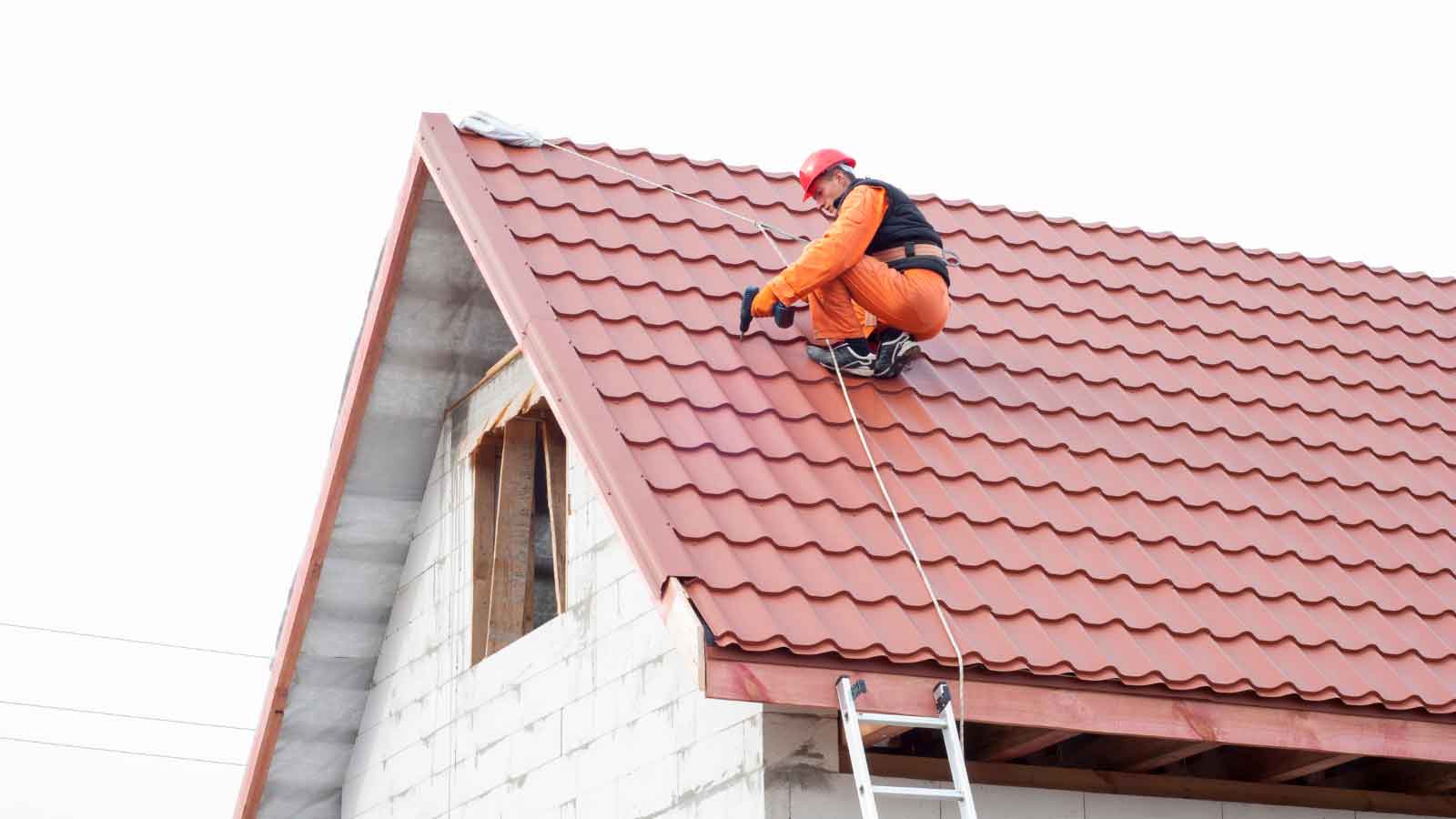When preparing for a roof replacement, you’ll need to clear your attic, secure valuables, and protect outdoor features from debris. Professional roof replacement services require thorough preparation to ensure smooth project completion. Remove wall decorations, create safe zones for children and pets, and prepare for noise and dust disruptions. Establish a daily schedule that works around construction hours and seal vents to control dust infiltration. These preparations will make your roof replacement experience smoother and protect your home during this major project.
Clear the Attic and Secure Valuables
Three critical steps should be taken when preparing your attic for roof replacement. Initially, remove or cover all stored items, as roof work creates significant vibration and debris that can damage belongings. Proper attic organization before construction begins will prevent valuable damage and save you time searching for displaced items later.
Secondly, protect electronics and fragile possessions by relocating them to lower floors where they’ll remain safe from potential dust infiltration and impact. For valuable protection, use plastic bins with secure lids rather than cardboard boxes.
Finally, create clear pathways for any potential emergency access needed during construction. If contractors uncover unexpected issues, they may need to enter your attic quickly. Having organized, accessible space guarantees repairs proceed without delays or additional complications to your property.
Protect Your Landscaping and Outdoor Features
Roof replacement inevitably impacts your yard, so protecting your landscaping and outdoor features should be a priority before work begins. Cover delicate plants with tarps or plywood to shield them from falling debris. Consider temporarily relocating potted plants to a safe area away from the work zone.
Remove or cover outdoor furniture that could be damaged during the project. Patio sets, grills, and decorative items should be stored in your garage or placed under secure landscape protection. Mark sprinkler heads and other in-ground systems with flags so workers don’t accidentally damage them.
Trim back tree branches that might interfere with roof access. This helps roofers work efficiently while protecting your trees from unnecessary pruning. Taking these preventative measures will safeguard your outdoor investments and minimize post-project cleanup efforts.
Create a Safe Zone for Children and Pets
Just as you safeguard your landscaping, your family members require protection during a roof replacement. The noise, falling debris, and increased worker traffic create potential hazards for children and pets who may not understand the dangers.
Establish a designated safe zone inside your home, preferably away from exterior walls where hammering occurs. Maintain consistent child supervision throughout the project, explaining the process in developmentally-appropriate terms while establishing clear boundaries. For pets, effective pet containment is essential, consider using a spare room, basement, or arranging temporary boarding if your pet is easily stressed by noise.
Remember that roofing work typically spans several days, so create a routine that keeps vulnerable family members secure while maintaining their comfort. This temporary adjustment guarantees everyone stays safe during your home improvement project.
Remove Wall Decorations and Secure Fragile Items
The vibrations created during a roof replacement can travel throughout your home’s structure, potentially causing wall decorations to fall and fragile items to topple. Take time before construction begins to remove pictures, mirrors, and artwork from walls, especially in upstairs rooms directly beneath the roof.
For valuable wall decor that can’t be removed, consider securing it with extra support. Fragile items on shelves or in cabinets should be relocated to lower areas of your home or packed away temporarily. Wrap china, glassware, and keepsakes in bubble wrap or newspaper and store them in sturdy boxes.
Don’t forget to check closets and storage areas where vibrations might cause stacked items to become unstable. These simple precautions will protect your belongings from unnecessary damage during the replacement process. Understanding the 5 signs you need replacement helps homeowners time these preparations appropriately.
Prepare for Noise and Dust: Daily Life Adjustments
How will your family cope with the inevitable disruption a roof replacement brings? Consider creating a temporary schedule that accommodates the construction hours. For noise management, set up a quiet space in your home furthest from the work area. Notify family members to expect hammering and machinery sounds, and consider noise-canceling headphones for those working from home.
For dust control, seal off vents in rooms directly below the roof work using plastic sheeting and tape. Keep windows closed, especially on the upper floors. You’ll want to change your HVAC filter more frequently during this period. Consider relocating sensitive electronics that might be affected by dust particles. Daily vacuuming will help manage the inevitable dust that finds its way inside.
Coordinate With Neighbors About the Upcoming Project
Before your roof replacement begins, informing neighbors about the upcoming project demonstrates consideration and helps maintain positive community relationships. Discuss project timeline with immediate neighbors at least one week in advance, explaining the expected duration and daily work hours. Share noise expectations so they can plan accordingly for any disturbances.
| What to Communicate | How to Communicate |
|---|---|
| Project start date | Written notice |
| Expected duration | In-person conversation |
| Daily work hours | Email or text |
| Potential noise levels | Community app |
| Contractor contact info | Business card |
Consider offering small gestures like earplugs or coffee gift cards to thank neighbors for their patience. You’ll minimize complaints and foster goodwill by keeping everyone informed about temporary inconveniences they might experience during your roof replacement.
Set Up Temporary Parking and Material Staging Areas
Once your roofing contractor arrives, they’ll need designated areas for equipment, materials, and worker vehicles that won’t disrupt your daily routine. Clear your driveway or create temporary access points along your property that allow for efficient material delivery without blocking your garage or main entrance.
Work with your contractor to identify the ideal staging area, usually a flat section of your yard where roofing materials can be safely stored. This area should be easily accessible to workers but protected from potential damage. Consider using plywood sheets to protect your lawn from heavy materials.
If street parking is limited, notify neighbors about temporary worker vehicles and coordinate with your contractor about delivery schedules to minimize disruption and guarantee smooth workflow throughout your roof replacement project. When considering material options, review information about shingle material options to make informed decisions about your replacement.
Document Your Property’s Pre-Project Condition
Taking thorough documentation of your property’s condition before the roofing project begins will protect both you and your contractor from potential disputes. Create a pre-project checklist that captures the current state of your home’s exterior, landscaping, and adjacent structures.
Your documentation should include:
- Detailed photo documentation of your home’s exterior walls, windows, gutters, and landscaping from multiple angles
- Videos that pan across your property, capturing the condition of fragile items like satellite dishes, antennas, and decorative elements
- Written notes identifying any existing damage or concerns, with measurements where applicable
Don’t forget to photograph your attic interior and ceilings as well. This evidence establishes a clear baseline that helps resolve any questions about responsibility for damages that might arise. For comprehensive roof replacement services that prioritize protecting your property throughout the process, consider working with residential roofing contractor Truecraft Construction, known for their meticulous preparation and cleanup procedures.
Understanding when to make repair vs replacement decisions helps homeowners plan appropriately, while knowing how a new roof affects Orange County home appraisals provides valuable investment perspective. Residents in specific areas can benefit from localized expertise, such as Garden Grove roof replacement specialists who understand regional requirements and building codes.
Frequently Asked Questions
How Long Does a Typical Roof Replacement Take to Complete?
You’ll typically see your roof replacement finished in 1-3 days. Timeline expectations depend on your home’s size, weather conditions, and unforeseen issues. Project phases include tear-off, installation, and cleanup, all progressing efficiently with professional crews.
Will My Homeowner’s Insurance Cover Any Part of the Replacement?
Your homeowner’s insurance might cover roof replacement depending on your insurance policy. Check your coverage limits and damage cause. Time-related wear typically isn’t covered, but damage from storms or accidents often is.
Can I Stay in My Home During the Roof Replacement?
Yes, you can stay in your home during roof replacement. However, be prepared for high noise levels throughout the day. Contractors will take safety precautions, but you’ll want to keep children and pets away from work areas.
What Happens if Bad Weather Occurs During the Project?
If bad weather occurs, contractors will take weather precautions like covering exposed areas with tarps. You’ll experience project delays, as work can’t continue in rain or high winds for safety reasons.
How Much Should I Budget for Unexpected Costs or Repairs?
You’ll want to set aside 10-15% of your total project cost for unexpected expenses. This buffer guarantees you’re covered when surprises arise during your roof replacement. Budget considerations should include potential structural repairs.


